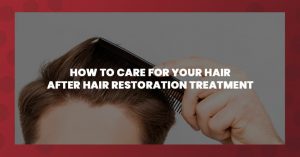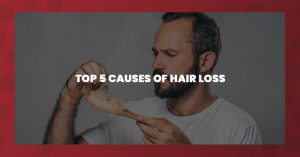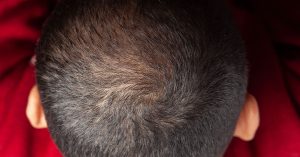We all know that smoking is bad for our health. Smoking increases the risk of lung cancer and respiratory illness, and it contributes to dozens of other diseases. But did you know it’s also bad for our appearance? Smoking has negative effects on our skin and also on our hair.
Researchers have found a strong correlation between smoking and early hair loss. With other factors being equivalent, 71 percent of smokers in a recent study had grade 3 or 4 hair loss on the Hamilton-Norwood Scale… while only 10 percent of non-smokers experienced the same degree of hair loss.
How Does Smoking Affect Hair?
Research into the effects of smoking on hair growth and loss are ongoing, but it’s a safe assumption that smoking almost certainly hastens the process of androgenic alopecia and leads to other types of hair loss as well.
Here are some of the processes through which smoking damages your hair and scalp:
- Vasoconstriction: Nicotine is a chemical found in tobacco products. When consumed, it constricts your blood vessels – including those in your skin and scalp – leading to poor hair health.
- Oxidative stress: This process occurs when highly reactive molecules called free radicals overwhelm your body’s defenses, damaging your hair follicles.
- Hormonal changes: Smoking is strongly correlated with an increase in androgens and testosterone levels – leading to thinning, unhealthy hair.
- DNA changes: Smoking damages both nuclear and mitochondrial DNA. This leads to a disruption of your hair’s catagen phase (transition from growth to resting), limiting follicle growth.
- Unbalanced pH: When smoke settles in your hair, it upsets the scalp’s natural pH balance. This can lead to a condition called “acidic scalp,” which causes the cuticle of the hair to contract – leading to excess shedding and poor hair growth.
Does Vaping Cause Hair Loss?
If your vape liquid contains nicotine, the effects are similar to those of smoking traditional cigarettes. Like smoking, vaping can cause vasoconstriction, oxidative stress, DNA and hormonal effects, and pH imbalances – all of which may lead to hair and scalp damage. Vaping is still a relatively new phenomenon, so studies about additional long-term effects are ongoing.
Will Hair Loss From Smoking Grow Back?
Smoking-related hair loss may be reversible, provided there is no additional cause for it. When you quit smoking or consuming other forms of nicotine, those toxins begin to leave your body so it can heal. Your blood vessels stop shrinking and start to function normally again. Hair follicles will no longer be subjected to smoking-related stress and your hair will have much better conditions for regrowth.
Hair Center of Nebraska Offers Options for Smoking-Related Hair Loss
If you are struggling with smoking-related hair loss, The Hair Center of Nebraska can maximize your hair and scalp’s potential and create optimal conditions for regrowth. We also can determine if there are other reasons for your hair loss and find ways to address them with a treatment plan that is right for you.
By scheduling a consultation with us, you are taking the first step on your journey to a fuller head of hair and a better life. Contact us now to set up an appointment.






